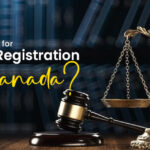In the realm of intellectual property protection, trademarks stand as stalwarts guarding the unique identities of products, services, and ideas. They serve as indispensable tools for distinguishing goods and services in the marketplace, fostering consumer trust, and building brand recognition. However, for individuals seeking to protect their creations, the question often arises: Can they safeguard their intellectual property without the backing of a formal company?
This comprehensive guide aims to navigate the intricate terrain of trademark registration for individuals, elucidating the process, benefits, and common misconceptions surrounding this crucial aspect of intellectual property law, focusing on the procedures in both the USA and Canada.
Read Also This – What Do You Know About Colour Trademarks
Individuals and Trademarks:
Indeed, individuals wield the power to register trademarks sans the trappings of a registered company. At its core, a trademark serves as a beacon, distinguishing one entity’s offerings from the multitude. Thus, whether an individual luminary, a budding entrepreneur, or a creative mind, the avenue of trademark registration remains accessible.
Traditionally, the concept of trademark registration has been closely associated with businesses and corporations. Large companies invest significant resources in securing trademark protection for their brands, recognizing the value of establishing exclusive rights to their logos, slogans, and product names. However, in today’s rapidly evolving landscape, individuals—entrepreneurs, artists, freelancers, and creatives—are increasingly recognizing the importance of protecting their intellectual property assets, even without the infrastructure of a formal business entity.
Trademark registration offers individuals numerous advantages and protections. By securing a trademark, individuals can establish legal ownership of their unique identifiers, preventing others from using similar marks in ways that could cause confusion among consumers. This exclusivity not only safeguards the individual’s brand identity but also confers the right to enforce their trademark against infringers, potentially leading to legal remedies such as damages and injunctions.
Moreover, trademark registration provides individuals with a valuable asset that can enhance the value of their creations. A registered trademark can add credibility and prestige to a product, service, or creative work, signalling to consumers that it meets certain standards of quality and authenticity. This can be particularly beneficial for individuals operating in competitive markets where brand recognition plays a significant role in consumer decision-making.
Rationale Behind Individual Trademark Registration:
A plethora of motives propels individuals towards trademark registration:
1. Personal Branding: In the age of influencers and digital creators, personal branding emerges as a potent force. Registering a trademark fortifies one’s name or persona against unauthorized exploitation.
2. Future-Proofing: Anticipating future business endeavours, individuals embark on trademark registration journeys to fortify their brand’s foundation, ensuring protection upon expansion.
3. Product Launches: Pioneering innovators often unveil products sans corporate frameworks. Herein, a trademark assumes significance, safeguarding the distinctiveness of the product amidst the competitive landscape.
Despite these compelling benefits, many individuals harbour misconceptions about the trademark registration process. Some mistakenly believe that trademark protection is reserved exclusively for large corporations or that it is prohibitively expensive and complex for individuals to pursue. However, the reality is that individuals can register trademarks for a wide range of goods and services, regardless of their size or organizational structure.
The process of trademark registration typically involves several key steps, including conducting a comprehensive search to ensure the proposed mark is available for registration, preparing and filing a trademark application with the relevant intellectual property office, and responding to any objections or challenges raised during the examination process. While navigating these steps may require careful attention to detail and familiarity with intellectual property law, individuals can seek assistance from trademark attorneys or online resources to streamline the process.
Furthermore, individuals should be aware that trademark protection extends beyond just words and logos. It can also encompass non-traditional marks such as sounds, colours, and even scents, provided they meet certain criteria for distinctiveness and recognizability.
Read Also This – Safeguarding Brand by International Trademark Registration
To sum up, trademark registration offers individuals a powerful means of safeguarding their intellectual property and establishing their unique identities in the marketplace. By understanding the process, benefits, and common misconceptions surrounding trademark registration, individuals can take proactive steps to protect their creations and enhance their commercial opportunities.
Benefits Enshrined in Trademark Registration:
Trademark registration augments the ethos of brand protection, encompassing an array of advantages:
1. Exclusivity: Trademark registration grants the owner exclusive rights to use the mark in connection with specific goods or services within a particular geographic area. This exclusivity prevents others from using similar marks that could cause confusion among consumers. By securing this exclusivity, the trademark owner can protect their brand identity and reputation, ensuring that consumers can easily distinguish their products or services from those of competitors.
2. Credibility: A registered trademark symbolizes a commitment to quality and consistency, which enhances the credibility of the brand in the eyes of consumers. When consumers see a registered trademark, they perceive the brand as being legitimate and trustworthy. This credibility can lead to increased consumer confidence, loyalty, and positive word-of-mouth recommendations, ultimately strengthening the brand’s position in the marketplace.
3. Legal Safeguarding: Registering a trademark provides the owner with legal protection against unauthorized use or infringement by third parties. It serves as prima facie evidence of ownership, making it easier to enforce the rights associated with the mark in court. With a registered trademark, the owner can take legal action against infringers, including seeking damages, injunctions, and other remedies. This legal safeguarding reinforces the importance of respecting intellectual property rights and helps deter potential infringers from attempting to exploit the brand.
4. Asset Valorization: Trademarks have the potential to become valuable assets for a business over time. As the brand grows and becomes more recognized in the marketplace, the trademark accrues goodwill and reputation, contributing to the overall value of the business. Registered trademarks can be licensed, franchised, or used as collateral for loans, providing opportunities for revenue generation and investment. Additionally, trademarks can enhance the market competitiveness of a business, as they represent a unique identifier that sets the brand apart from competitors and attracts customers.
In conclusion, registering a trademark provides a number of advantages that are essential for safeguarding and raising a brand’s value. From securing exclusivity and credibility to providing legal protection and asset valorization, registered trademarks play a vital role in establishing and maintaining a strong presence in the marketplace.
Dispelling Common Misconceptions Surrounding Trademarks:
1. Domain Name Equivalence: Contrary to popular belief, domain ownership doesn’t equate to trademark registration. The former denotes web address ownership, whereas the latter delineates exclusive brand usage rights.
2. Global Enforcement Fallacy: The myth of global trademark protection crumbles under scrutiny, as trademarks manifest territorial jurisdictions, circumscribing their enforceability.
3. Passive Registration Fallacy: Mere registration doesn’t culminate in absolute protection. Active vigilance and enforcement constitute the sine qua non of safeguarding trademark rights, preempting dilution or infringement.
Steps Towards Individual Trademark Registration:
In order to get International Trademark Registration, one must follow the following steps:
1. Research: Before initiating the trademark registration process, it’s essential to conduct thorough research to ensure that the proposed trademark is unique and does not infringe upon existing trademarks. This involves searching trademark databases, both national and international, to identify any similar or identical marks that may already be registered or pending registration. By conducting comprehensive research, applicants can minimize the risk of potential conflicts and increase the likelihood of a successful registration.
2. Application Preparation: Crafting a well-prepared trademark application is crucial for success. This involves providing clear and specific information about the mark, including its representation (such as a word, logo, or combination thereof) and the goods or services with which it will be associated. It’s essential to accurately describe the mark and its intended use to avoid ambiguity or confusion during the examination process. Additionally, applicants may choose to seek legal guidance to ensure that the application meets all regulatory requirements and maximizes the chances of approval.
3. Submission: Once the application is prepared, it must be submitted to the appropriate regulatory authority, such as the United States Patent and Trademark Office (USPTO) in the United States. The submission process typically involves completing an official application form and paying the required fees. Applicants must ensure that all necessary documentation is included and that the application is submitted in the correct format and according to the prescribed guidelines to avoid delays or rejection.
4. Examination: After submission, the trademark application undergoes examination by the regulatory authority to assess its eligibility for registration. During this process, examiners review the application to ensure that it complies with legal requirements and does not conflict with existing trademarks. This may involve conducting additional searches and reviewing the application’s contents in detail. If any issues or discrepancies are identified, the applicant may be required to provide clarification or make amendments to the application.
Read Also This – How to Amend a Registered Trademark
5. Publication: If the trademark application passes the examination stage, it may be published in an official gazette or journal for public scrutiny. This publication period allows third parties to review the proposed trademark and raise objections or oppositions if they believe it infringes upon their rights. The publication serves as a safeguard against potential encroachments and provides an opportunity for interested parties to voice their concerns before the trademark is officially registered.
6. Registration: The culmination of the trademark registration process is the official registration of the mark. If no oppositions are raised during the publication period or if any oppositions are successfully resolved, the mark will be registered and granted legal protection. This Trademark registration confers exclusive rights to the trademark owner, allowing them to use the mark in connection with the specified goods or services and take legal action against infringers. Successfully navigating the registration process heralds official recognition and validation of the trademark, establishing it as a valuable asset for the owner.
Conclusion:
Trademark registration stands as a bastion, enshrining protection and prominence within the marketplace’s tumultuous expanse. Irrespective of corporate affiliations, the mantle of trademark protection beckons individuals, resonating with the ethos of innovation and brand stewardship. Vigilance, comprehension of jurisdictional idiosyncrasies, and legal acumen converge to chart a course teeming with opportunities for brand fortification.


